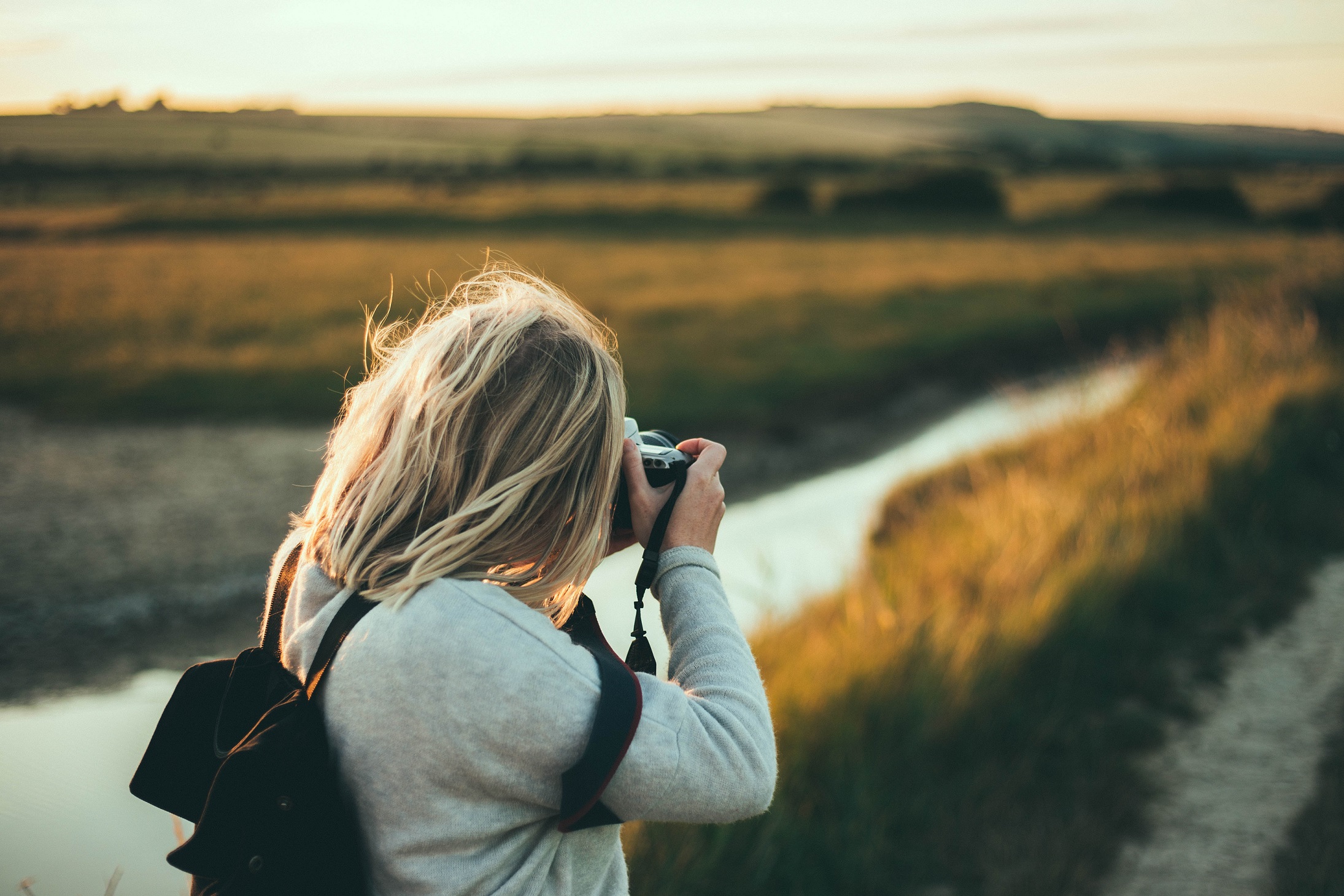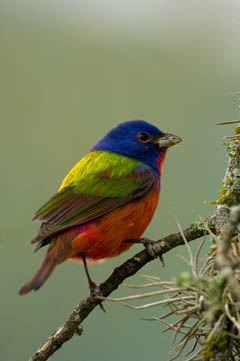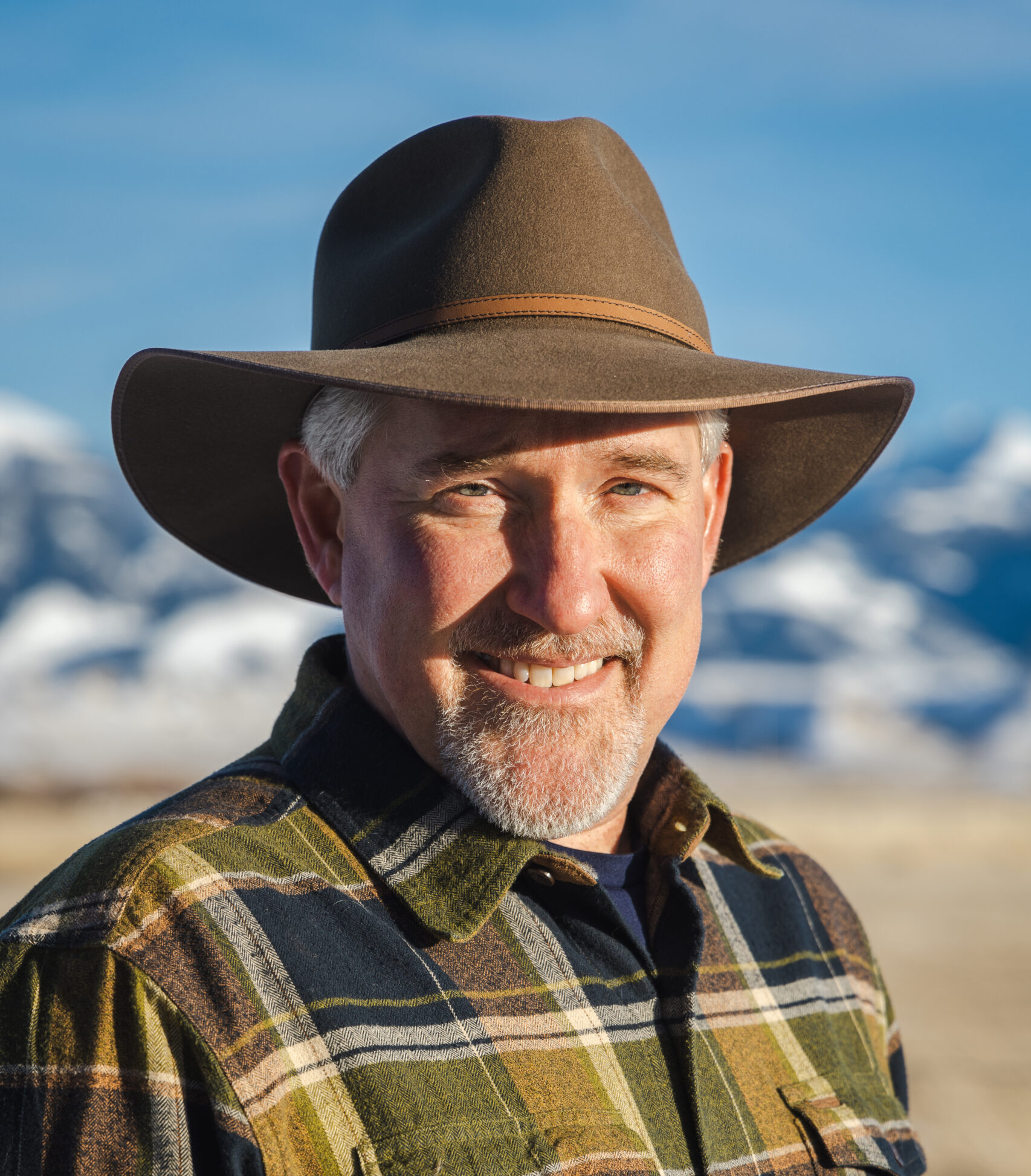There is a crossroads in Texas. Down along the Mexican border, in a four-county area, sits the Lower Rio Grande Valley—a merger of tropics and subtropics.
“The region is a convergence of ecosystems and habitats all coming together in a small area,” says Carter Smith, executive director of the Texas Parks and Wildlife Department. “Chihuahuan desert, Tamaulipan thornscrub, the Central Flyway, and Gulf Coast influences, the Laguna Madre bay system. It is the epicenter of biodiversity.”
To be more precise, it is the most biodiverse spot in the second most biodiverse state in the nation. And the birds love it.
So much so, that the Lower Rio Grande is one of those “bucket list” destinations for bird watchers and wildlife viewers. They come from around the world to see nearly 500 species of birds, including Great Kiskadees, Altamira Orioles, Plain Chachalacas, the rare Hook-billed Kites, Ferruginous Pygmy Owls, and the iridescent greens and blues of the Green Jay. In his book, Fifty Places to Go Birding Before You Die, Chris Santella writes that the Lower Rio Grande is “geographically blessed from a birding perspective.” In any given year, a half dozen species of birds not found anywhere in the United States could show up in South Texas.
The Lower Rio Grande and South Texas also is the land of big cattle ranches. The famous 825,000- acre King Ranch can be found just north of here. And since 95 percent of Texas is privately owned, most of this valued biodiversity is under private stewardship, currently facing huge urbanization pressures.
The area also is one of the fastest growing regions of the state. Families that have run cattle on these lands for generations confront increasing challenges in keeping up with their management costs. Ranchers do not want these vast stretches of land to be a financial burden on their children and their children’s children. The threat to this special place is not just the displacement of a culture, but the fragmentation and loss of wildlife habitat. Lose the ranch and you lose the habitat.
A New Focus
Fortunately, at this crossroads, stands a group of environmental entrepreneurs taking a free market approach to saving the region’s wildlife habitat and ranches. Led by John and Audrey Martin, landowners in Edinburg, their efforts combine the tradition of Texas hunting leases with the growing popularity of wildlife viewing and nature photography. The solution: Create a steady stream of income for ranchers by day-leasing private lands to nature and wildlife photographers.
It is an idea that ties revenue directly to the quality and preservation of habitat. “With the exception of hunting leases, private landowners in South Texas have never had an economic reason to preserve wildlife habitat,” explains John Martin. “With photography, we can give pure economics to wildlife.” In practice, the concept joins some of Martin’s guiding principles. First, that “conservation is accomplished through the creation of wealth,” and second that “photography is the most powerful conservation tool on the planet.”
The use of photography to save wild places is not a new concept. In 1872, proponents of a bill to create the first national park strategically placed in the Rotunda of the United States Capitol photographs of Yellowstone’s wonders taken by William Henry Jackson. The vintage photographs left a marked impression on the public and their congressmen, and helped seal the fate of Yellowstone.
For Martin, his rotunda moment came in 1994 through his involvement with the Valley Land Fund, an organization he helped found to preserve land in the Lower Rio Grande. To raise money for the fund, Martin organized a wildlife photo contest. It paired nature photographers with private landowners. The winning team split the purse down the middle. The images were celebrated in a coffee-table book, which created additional photographer interest and demand to photograph Lower Rio Grande wildlife.
The contest was just the beginning. After that first event, Martin spent the day with a friend who had created an intimate one-acre photography setting on his ranch, complete with a watering hole and photography blind. Sitting in the blind gave Martin an up-close wildlife viewing opportunity. He calls it “the single greatest nature experience in my life.” A retired financial planner and business professor, Martin thought, “This is marketable. People would pay $100 to $200 dollars a day for this experience.”
In 2002, with Martin leading the way, five landowners, calling themselves Lens and Land, began to advertise their ranches to wildlife photographers, charging them $100 to $125 dollars a day for a more intimate nature setting than is available on nearby public lands. The ranchers created photo opportunities by providing things like photography blinds. Some would offer lodging and guide services. The idea proved such a hit that six landowners to the north, representing 24,000 acres, created the Texas Hill Country Nature Photography Alliance to provide the same opportunity in a different habitat.
Ranch Economics
Ranching is a hard business. In South Texas, grossing $35 to $50 an acre is a good year for a cattle rancher. More often than not, a cow-calf operation brings less than $10 an acre, and usually closer to $4 an acre, according to the state’s chief wildlife officer Carter Smith. To make ends meet, ranchers look for additional streams of revenue to offset costs. With hunting leases, cattle ranchers can get close to $20 an acre, but hunting has its seasonal limits and, in some circumstances, can also mean higher overhead.
A long-time conservationist, Martin also has 35 years of experience in the world of finance. “There’s not enough money for government or charities to buy all of the biodiverse habitat. So, if we are going to preserve biodiverse systems, we need to give private landowners a competitive rate of return.”
His optimal economic model has large landowners dedicating 500 acres for photography day-leasing. Hosting ten photographers a day for 200 days a year at $100 a day, a rancher could bring in $200,000 a year—or $400 an acre. This year, Martin was booked from March to May with five to ten photographers a day.
According to a 2006 U.S. Fish and Wildlife Service survey, nearly one-third of the U.S. population 16 years and older, or 71 million people, participated in wildlife viewing compared with 12.5 million Americans in the same age class participating in hunting. Of that number, 11.7 million U.S. residents traveled specifically to photograph wildlife. In my home state of Florida, half a million nonresidents came to take pictures of wildlife bringing with them an average household income of $73,000. The Martins have hosted photographers from as far as Europe and Canada.
Rent a Cowboy
While the economics of wildlife photography is still an evolving proposition, the wildlife benefits have been immediate and meaningful.
In addition to giving a visual voice to nature, the photo contests and leasing of lands for wildlife photography are helping to inform, educate, and motivate private landowners to conserve wildlife habitat. “Families are recognizing they have something special on their ranches,” says Smith. “I can’t tell you the number of times a rancher has said, ‘I’ve ranched here my entire life and had no idea that species existed on my land.’”
As ranchers help photographers with the lay of the land, nature photographers and state wildlife experts are helping ranchers appreciate the value of wildlife in their own backyards. Some are hiring biologists to further enhance their properties. And, as Audrey Martin notes, the eight Valley Land Fund photo contests and seven subsequent photograph books since 1994 have resulted in 7,000 acres of conservation easements. “You find people changing their attitudes,” explains John Martin, telling the story of one rancher who had a policy of killing every rattlesnake on his property. “One of our photo contests yielded that rancher a $2,300 prize winning photo of a rattlesnake on his land. From that point forward, the rancher’s policy was to only kill rattlesnakes found near his house.”
Bob Petersen is another Texas ranch owner who was inspired by Lens and Land and thought that photography could be used on his land to generate income for improved habitat management. His 800- acre ranch now offers photography opportunities for $125 a day as well as photography workshops.
With habitat management programs designed by Texas Parks and Wildlife, the Environmental Defense Fund and the Nature Conservancy, Petersen offers nature photographers habitat for 140 different bird species on a property of savannah prairies with native grasses, wildflowers, and stately live oaks. He also entered into a safe harbor agreement with the U.S. Fish and Wildlife Service to dedicate 200 acres to the preservation of the rare Blackcapped Vireo songbird, another draw for wildlife watchers. Says Petersen, “Some people think you shouldn’t make money on nature, but I think the free market is going to have to play a larger role.”
Lens and Land
Leasing private lands for nature photography is still a business in its embryonic stage. The numbers are still fairly modest. Income for the five properties in Lens and Land hit $75,000 this year, up from $5,000 at its inception. Thanks to the Martins, Petersen, Smith and others, many landowners are becoming aware of its potential. The revenue from photo leasing alone will not make these lands selfsustaining, but it offers landowners another stream of money to help offset the cost of operations. And unlike hunting in Texas, the revenue potential can last year round.
The big question remaining is whether enough people will pay. But, as Petersen notes, “Twenty years ago, people thought paying for hunting was crazy.” That said, nobody is waiting around for twenty years for trends to evolve. To help boost the supply and demand for this fledgling industry, the landowners have already embarked on their next big idea—Images for Conservation Fund Pro-Tour. The Pro-Tour is an exclusive series of nature photography contests modeled after the PGA Tour and bass fishing tournaments.
Like the Valley Fund contest, the ICF Pro-Tour event matches ranch owners up with professional wildlife photographers. In 2006, in the Hill Country of Texas, the inaugural competition awarded $160,000 in prizes split between the landowners and the photographers. “At that time, [it was] the richest nature photographic event on the planet,” says Martin. Ninety-three landowners applied for 17 slots. After this first contest, Martin says three participating landowners began the process of putting lands into conservation easements. And 10 of the original 17 are now actively establishing photo eco-tourism businesses.
The tour’s second event, held this year in the Coastal Bend region of Texas, raised $300,000 in sponsorships. Tour organizers increased the minimum acreage required for landowner entry from 500 to 1,000 acres, and still 40 landowners applied for 20 spots. The event kicked off with a symposium for ranchers and photographers and drew 45 South Texas landowners interested in learning more about leasing their lands.
Wide Market
The state’s wildlife agency is at the crossroads too. Smith is encouraged by what he sees in nature photography leasing. “I am excited by this trend and where it is going. Philosophically, it is where we want to go as an agency—voluntary, non-regulatory, incentive-based programs for wildlife.”
As a landowner, Bob Petersen is also inspired. “Conservation for profit is a neat idea. I would rather do conservation through a usage model than a taxation model any day.”
In giving Texas landowners additional income and pride in the habitats they provide while giving wildlife photographers solitude, closeness to nature, and convenience, nature photography leasing may prove to be the next new thing in free market environmentalism.
And that would suit one of its pioneers, John Martin, just fine: “For the last 15 years I have been searching for a tool that would offer the opportunity to develop a sustainable industry. Nature photography is already in place but not directed. It is like bass fishing before professional bass tournaments.
“Our latest trip to Alaska drove home this point. We were around thousands of people, all of whom carried digital cameras. The number one reason they were there was for the wildlife of Alaska. This is a huge undirected constituency with great economic power.”
“I believe we have an opportunity to develop a $100 billion industry around private lands nature photography tourism. If that can be accomplished we will save enough biodiversity to allow nature to survive.”





